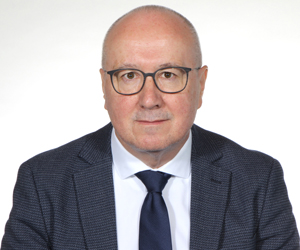The Glass Trend Symposium, organized by the GMIC on November 9, in Columbus, Ohio, USA, will immediately follow the Conference on Glass Problems, November 6 to 8, where RATH will be present with a booth. The glass industry, like so many others, faces major challenges in reducing its carbon footprint.
The theme of the Glass Trend Symposium is “The Future of Glass Manufacturing.” At this event, glass manufacturers, refractory and equipment suppliers, raw material and energy suppliers, design engineers, process engineers and many more will share their experiences and discuss how this can be achieved.

In his lecture during Session 1 – Furnace and Refractory Design – from 9:45 to 10:15 am, Manfred Salinger, Head of Advanced Ceramic Filtration Solutions at RATH Group, will share his experience on “Holistic approach to emission control and heat recovery.” High-temperature filters are key components for emission control and heat recovery solutions and for reducing the carbon footprint of glass melting.
Manfred Salinger, a hot gas filtration expert, will compare the improved emission control system with the conventional solution, introduce the range of available filter element lengths and review the lessons learned and the keys to reliable operation and longer service life of the filter elements.
In many thermal process facilities, the clean-up stage cools the exhaust gases to low temperatures that are insufficient for re-use. Cleaning of exhaust gases at elevated temperatures of up to 750 degrees Celsius allows the gas to be re-used in thermal processes or for power generation. In order to reduce the footprint of the emission control equipment, hot gas filters can now be equipped with ceramic filter elements up to 6 metres long. The new generation of longer filter elements lowers capital investment costs while maintaining the important functions of particulate removal and selective catalytic reduction of nitrogen oxides.




